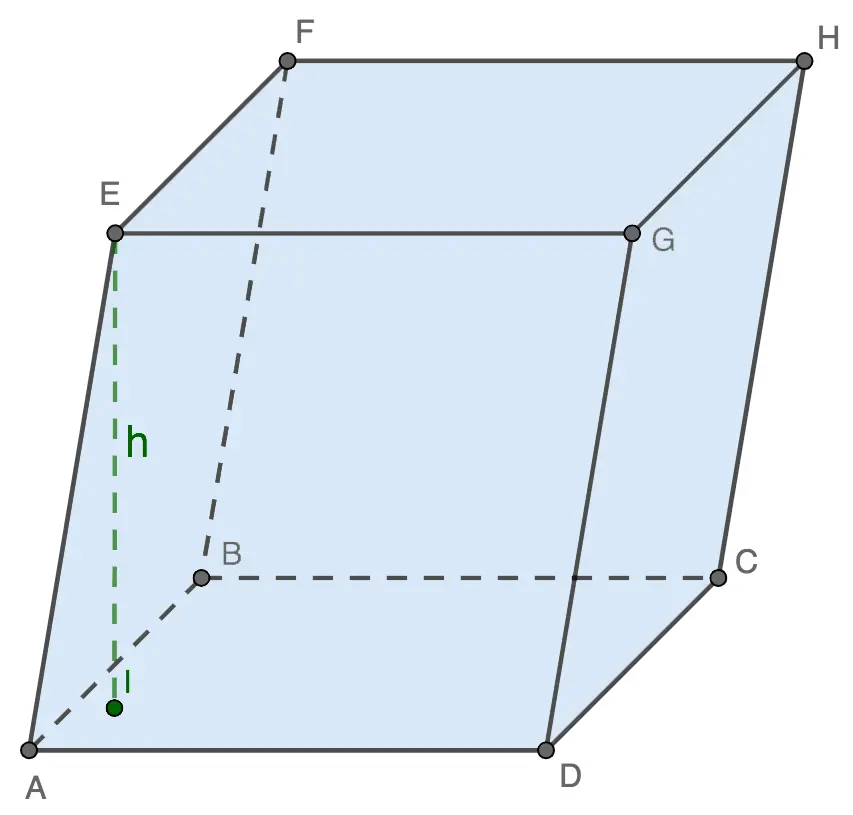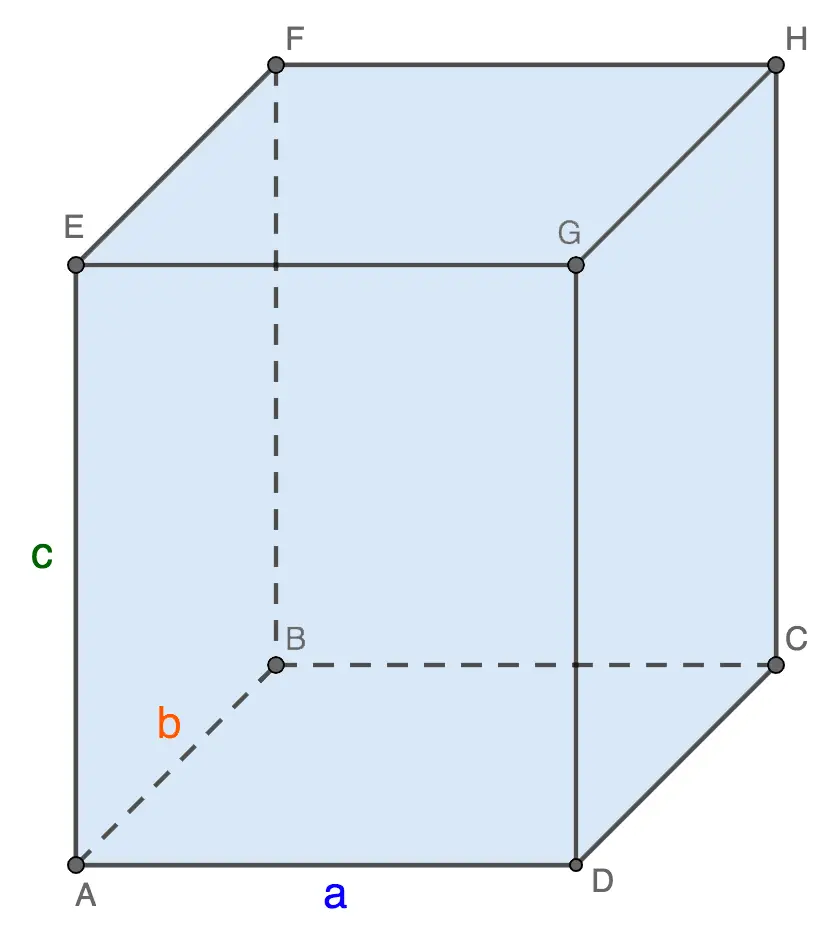Contents
In this publication, we will consider how you can find the volume of a parallelepiped and analyze examples of solving problems to fix the material.
The formula for calculating the volume of a parallelepiped
1. General formula
The volume of any parallelepiped is equal to the product of the area of its base by the height.
V=Smain ⋅ h

- Smain – base area (ABCD or EFHG, equal to each other);
- h – height.
This formula is valid for all types of geometric shapes:
- oblique – side faces are not perpendicular to the bases;
- straight – all side faces (4 pieces) are rectangles;
- rectangular – all faces (side and base) are rectangles;
- rhombohedron – all faces are equal rhombuses;
- Cuba All faces are equal squares.
2. Volume of a rectangular parallelepiped
The volume of a figure is equal to the product of its length times its width times its height.
V = a ⋅ b ⋅ c

The formula follows from the following statements:
- The base of the figure is a rectangle whose area is calculated as the product of its length (a) to the width (b).
- The height of the figure is the length of the side face (c).
Examples of tasks
Task 1
Find the volume of the parallelepiped if it is known that the area of its base is 20 cm2and the height is 7 cm.
Decision:
We use the first formula, substituting the values known to us into it:
V=20cm2 ⋅ 7 cm = 140 cm3.
Task 2
Given a rectangular parallelepiped. The length and width of its base are 9 cm and 5 cm, respectively, and its height is 6 cm. Find the volume of the figure.
Decision:
Let’s use the formula for this type of figure:
V = 9 cm ⋅ 5 cm ⋅ 6 cm = 270 cm3.









